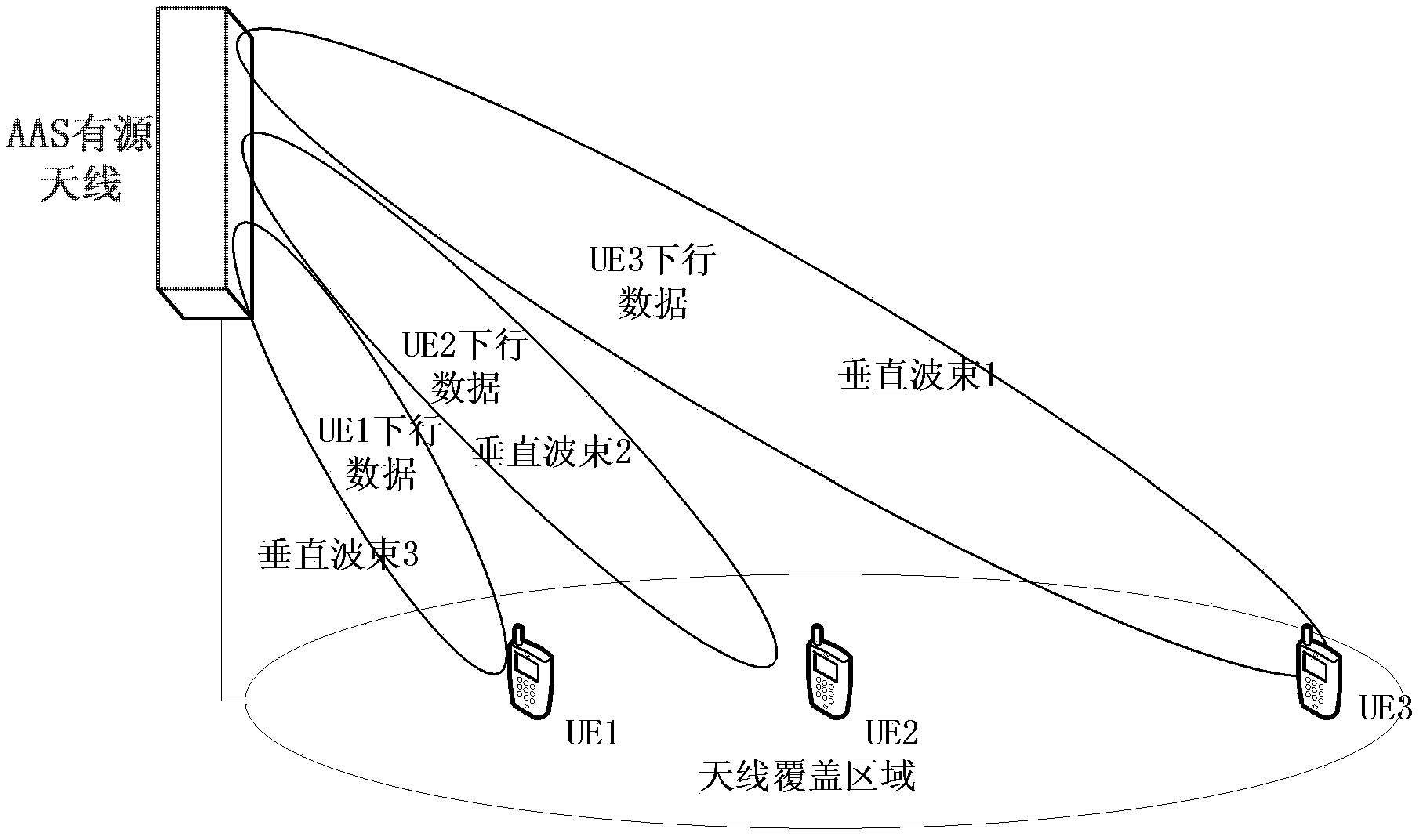Method and device for realizing downlink data transmission by utilizing active antenna system
A downlink data and system implementation technology, applied in diversity/multi-antenna systems, space transmit diversity, etc., can solve problems such as multi-sector interference, achieve the effects of reducing interference, facilitating engineering implementation, and improving system capacity
- Summary
- Abstract
- Description
- Claims
- Application Information
AI Technical Summary
Problems solved by technology
Method used
Image
Examples
Embodiment Construction
[0042] Such as figure 1 As shown, the method for implementing downlink data transmission using an active antenna system applied to an LTE or LTE-A system includes:
[0043]Combining the beams with uplink receiving power greater than the preset threshold among the beams of the user on the physical resources to form the user's downlink active beam set;
[0044] According to the number of beams in the user's downlink active beam set, transmit the user's downlink data by using open-loop diversity in the downlink active beam set or directly transmit the user's downlink data; The downlink data is transmitted in a divisional multiple access manner, wherein users whose sets of downlink active beams do not overlap constitute paired users.
[0045] The above method can be aimed at vertical beams or horizontal beams, for example, open-loop diversity transmission is performed on downlink vertical active beams and downlink horizontal active beams respectively, which can respectively solve...
PUM
 Login to View More
Login to View More Abstract
Description
Claims
Application Information
 Login to View More
Login to View More - R&D
- Intellectual Property
- Life Sciences
- Materials
- Tech Scout
- Unparalleled Data Quality
- Higher Quality Content
- 60% Fewer Hallucinations
Browse by: Latest US Patents, China's latest patents, Technical Efficacy Thesaurus, Application Domain, Technology Topic, Popular Technical Reports.
© 2025 PatSnap. All rights reserved.Legal|Privacy policy|Modern Slavery Act Transparency Statement|Sitemap|About US| Contact US: help@patsnap.com



